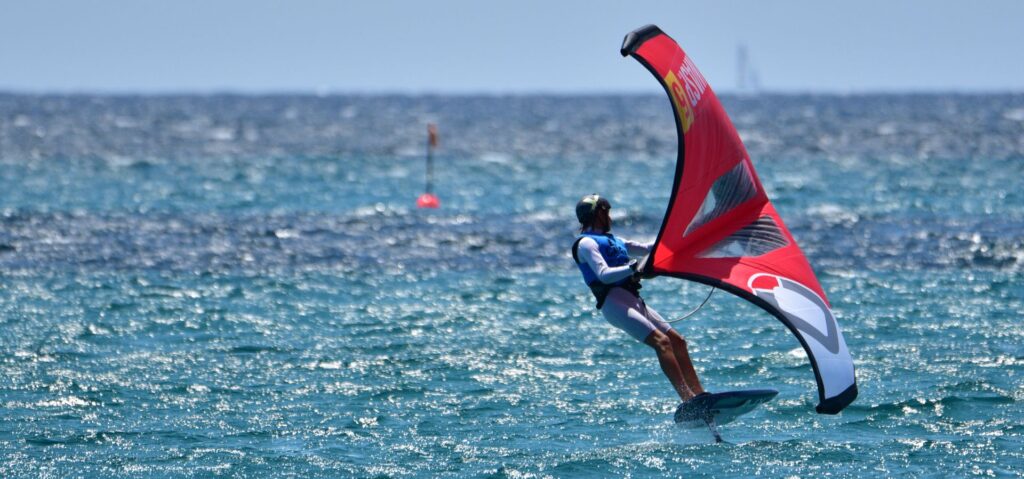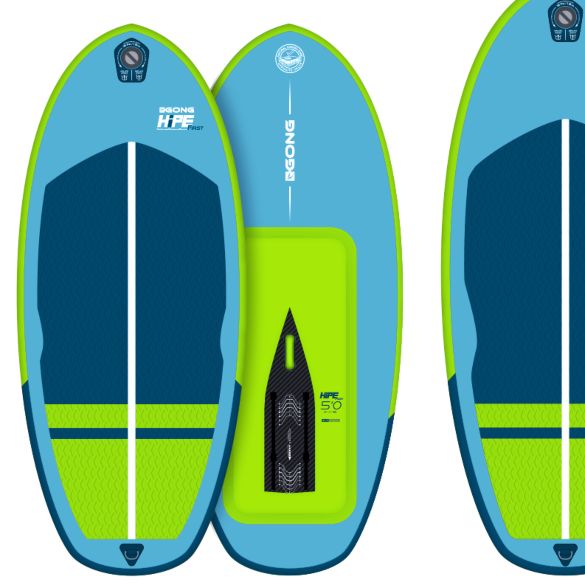There are ongoing discussions about whether an inflatable wingfoil board or rigid board is better. In the end, it all depends on you and what you prefer. Ultimately, the choice between an inflatable and rigid wingfoil board depends on individual preferences, skill level, budget, and intended use. Inflatable boards are favored for their portability, convenience, and forgiving ride, while rigid boards offer higher performance and responsiveness at the cost of less portability. Consider your priorities and riding style when making a decision.
Here are some thoughts and things to keep in mind about wingboards: inflatable or rigid.

How to choose between an inflatable wingfoil board or rigid
The overall idea in the wing foil community is that rigid boards perform better than an inflatable wingfoil board. And that is probably true. But what’s also true is the fact that they don’t come with the practicality of an inflatable board, when it comes to storing and travelling with your wingfoil equipment.
People used to say that inflatable boards are soft, will bend when you stand on it, stick to the water and don’t allow you to take off from the water easily. These days, an inflatable board gets inflated to a pressure of 15 to 20 PSI, making it extremely rigid and some of them take off from the water very very easily.
Tip for beginner wing foilers deciding between an inflatable or rigid board
First of all, you don’t want to make the beginner mistake of buying a too complicated board (see how to avoid beginner mistakes here). A too complicated board can be either too small or too expensive. A smaller board somehow always looks cooler, but it does not do you any favour when you start learning. You want to have a board that gives you security, stability and buoyancy in the water. Think your weight and add 30 to 40 liters to it as a rule of thumb. A too expensive board “for progressing quickly” can turn out to be very demanding, stretching your learning curve and ending up demotivating you.
As discussed, normally, a rigid board gives you better performance. But when you’re in the first steps of your new wingfoil journey, an inflatable board may not be such a bad idea. Here’s why.
- Inflatable boards are filled with air and a structure of stitches. All this high-pressure air going in there, adds to the buoyancy of the board. This helps you out when you start wingfoiling.
- Consider that when learning, you will fall a lot as a part of the learning process. An inflatable board is a lot less painful to fall on than a rigid one.
- There is an enormous second hand market out there. You can probably get a beginner board for a very good price second hand, but you can also easily sell your beginner board after going through the first steps of learning how to foil.
- Also, you may not want to spend a fortune on your first steps in the world of wingfoil. Inflatable boards are typically cheaper than rigid ones. There are some very accessible boards out there, that allow you to get on the water for a very reasonable price.
Here are two inflatable wingfoil boards that are very well suited for beginners that just want to learn how to take off in wingfoil without spending a ton of money. Read more about what equipment you should get if you are a beginner.

The Gong Hipe First is an example of a very accessible, inflatable board that allows you to learn how to wingfoil.
The F-One Rocket as well is very very good to learn how to fly. It’s a bit more expensive, but it also comes from a producer with years and years of presence in the market.

Construction and materials
Inflatable Boards: Inflatable wingfoil boards are constructed with drop-stitch technology, which involves thousands of threads connecting the top and bottom layers of the board. When inflated, the board becomes rigid and offers stability. The top layer is typically made of durable PVC or similar materials. The bottom typically has a carbon plate where the mast is mounted.
Rigid wingfoil boards are constructed using traditional materials such as foam or wood cores, laminated with fiberglass, carbon fiber, or other composite materials. They are solid and have a fixed shape and structure.
Portability and storage
Inflatable boards are highly portable and convenient for travel. They can be deflated and rolled up into a compact size, making them easy to transport in a backpack or a travel bag. Inflatable boards are also easier to store, requiring less space when not in use.
Rigid boards are less portable and more challenging to transport due to their solid structure. They require a larger storage space, such as a board bag or roof rack. Either that, or you put the back seat in your car down and store it in the trunk. However, they do not require inflation or deflation before and after use.
Durability and impact resistance
An inflatable wing foil board generally will provide a more forgiving and stable ride when the waves are very small. The air-filled structure adds buoyancy and helps dampen choppy water conditions. They are suitable for beginners and intermediate riders who prioritise stability and ease of use.
Rigid boards often offer better performance, responsiveness, and manoeuvrability compared to inflatable boards. They have a more direct feel, allowing for quicker response to rider inputs and better control during aggressive manoeuvres. Experienced riders who seek high-performance riding may prefer rigid boards.
Price range
Wing foil boards inflatable are generally more affordable compared to rigid boards. They offer a cost-effective option for entry-level riders or those on a budget.
Wing foil boards rigid tend to be more expensive due to the higher cost of materials and construction techniques involved. They are considered a long-term investment for riders who prioritise performance and durability.
Water conditions
One more thing to consider is the water conditions on the spot you want to ride. Some riders state that in choppy water, inflatable board tend to be less stable than rigid boards. In those conditions, waves and chop are prevalent. Inflatables seem to be corky and unstable in those conditions. In any case, the best place to learn how to wingfoil is on flat water if you have a spot available with those conditions. Read more about understanding wind and water conditions.
Read also:
